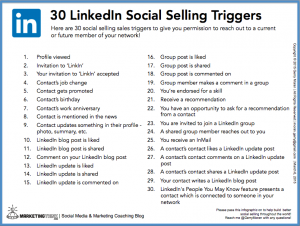 Last week, we outlined how the digital age has transformed the Information and Media industry, and how it has made customer loyalty more important than ever. Even though the industry continues to rely on advertising revenue streams, the digitization of information has significantly impacted advertising strategy. As customers now leave digital trails of their consumption, advertising can be tailored to reflect a targeted demographic or personalized for the consumer. Additionally, advertising success metrics have evolved as well—with click-through rates (CTR) emerging as a way to measure the advertising performance on a publisher’s site.
Last week, we outlined how the digital age has transformed the Information and Media industry, and how it has made customer loyalty more important than ever. Even though the industry continues to rely on advertising revenue streams, the digitization of information has significantly impacted advertising strategy. As customers now leave digital trails of their consumption, advertising can be tailored to reflect a targeted demographic or personalized for the consumer. Additionally, advertising success metrics have evolved as well—with click-through rates (CTR) emerging as a way to measure the advertising performance on a publisher’s site.
CTR is important, but it alone can’t tell you if your campaign or advertisement is successful or not. Luckily, because of the digital age, there’s a better way to measure success.
Click-through Rates (CTR) Defined
Number of clicks ÷ Number of times the ad is shown (impressions) = CTR
The CTR is expressed as a percentage. If the ad publisher reports 1 million monthly unique visitors, with 4 million page views and a CTR of 0.2% (or 8,000 click-throughs), the buyer might think those click-throughs are all distributed across the million unique users to yield 8,000 unique conversions.
Here’s the problem: CTR doesn’t take into account audience engagement, not to mention the fact that other advertisers could be competing for the click-through on the same page. In order to demonstrate the limitation of CTR as a performance metric, let’s assume:
- An ad publisher has 1 million unique visitors
- A single advertiser buys the entire inventory for the month — all 4 million-page views
- An expected 8,000 unique visitors click through to the advertiser’s site
Two factors skew actual unique conversion from the CTR’s expected unique conversions:
- CTR differences between visitors
Our research also finds that click-through behavior varies by engagement, with loyal audience members delivering the majority of click-throughs because of relevance. For a myriad of reasons, the 700,000 irrelevant first time visitors still generate activity, but at a lower CTR. For this example, let’s assume their CTR is half that of a loyal audience.
In addition, our research shows that some consumers are more likely to click on ads than others. These consumers not only generate click-throughs more frequently, but often do so on the same ad, further distorting the CTR. (This example assumes 10% of the loyal audience is twice as likely to click-through as the average loyal audience member.) Click-throughs from these consumers need to be de-duplicated.
- Click-through qualification
Our research shows that the advertiser’s desired conversion target, the loyal audience, usually comprises 20-30% of the visitors who generate 70-80% of the page views. This means that the available audience for the advertiser is really 200,000-300,000 visitors not 1 million. The remaining 700,000 audience members – those generated from search – are irrelevant to the advertiser.
After solving a couple of simultaneous equations, the CTR of the:
- Average loyal audience = 0.217%
- The consumers who are more likely to click = 0.434%
- The first time or rare visitor = 0.109%
The graphic below shows what these CTRs do in delivering conversion rates. The horizontal calculation follows traditional CTR thinking to yield the expected 8,000 unique conversions. The vertical calculation, called Audience Conversion Rate (ACR), follows a methodology of tracking unique audience conversions by qualifying the click-throughs as in-market and unique. Rather than getting 8,000 target audience members to click through, the advertiser would actually get 6,087, a full 24% short of the expected 8,000.
The more relevant ACR metric measures the number of unique audience members that clicked through divided by the total number of loyal audience members. Looking at the above example, the publisher is actually producing 2% ACR (i.e., 6,087/300,000). Not only is the 2% rate more representative of publisher and media performance, it is also a better value proposition to the advertiser. This makes your ad sales more productive.
The Implication
It’s time to change the conversation with your advertisers. While unique visitors and CTR are still important, loyal audience members and ACR is a better representation of success. The digital world has made subscriber loyalty even more important, as well as measurable. Learn more about how to drive consumption in our ebook, “The Adoption Game Plan.”
Digital & Social Articles on Business 2 Community
(63)
Report Post






